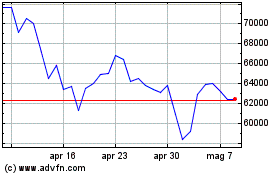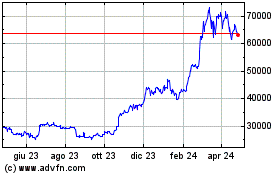

Key takeaways
-
AI tools like ChatGPT can help both experienced and new crypto
investors track portfolios with ease, freeing up time for other
investment activities and making the process more accessible.
-
Defining specific requirements, such as which cryptocurrencies
to track and the desired data points, is essential for building an
effective portfolio tracker tailored to your investment goals.
-
By combining ChatGPT with real-time crypto data from APIs like
CoinMarketCap, you can generate valuable market commentary and
analysis, providing deeper insights into your portfolio
performance.Developing additional features like price alerts,
performance analysis and a user-friendly interface can make your
tracker more functional, helping you stay ahead of market trends
and manage your crypto investments more effectively.
If you’re a cryptocurrency investor, you’ve clearly got a strong
appetite for risk! Cryptocurrency
portfolios involve many immersive stages, from desktop research
on the profitability of cryptocurrencies to actively trading crypto
to monitoring regulations. Managing a portfolio of cryptocurrencies
can be complex and time-consuming, even for savvy
investors.
Conversely, if you’re a newbie in the world of
cryptocurrencies and want to set yourself up for
success, you may be put off by the complexity of it all.
The good news is that artificial
intelligence (AI) offers valuable tools for the crypto
industry, helping you simplify portfolio tracking and analysis when
applied effectively.
As an experienced crypto investor, this can help free up your
valuable time to focus on other activities in your investment
lifecycle. If you’re a new investor, AI can help you take that
all-important first step. Read on to see how AI, and specifically,
ChatGPT, can help you build a customized portfolio tracker.
To begin with, what is it?
Let’s find out.
What is ChatGPT?
ChatGPT is a
conversational AI model that can deliver various tasks using
user-defined prompts — including data retrieval, analysis and
visualizations.
The GPT stands for “Generative Pre-trained Transformer,” which
references the fact that it is a large language model extensively
trained on copious amounts of text from diverse sources across the
internet and designed to understand context and deliver actionable
results for end-users.
The intelligence of ChatGPT makes it a powerful resource for
building a crypto portfolio tracker specifically geared toward your
investment profile and objectives.
Let’s learn how to build a custom portfolio tracker with
ChatGPT.
Step 1: Define your requirements
Technical specifics notwithstanding, it is crucial to first
define what you expect from your crypto portfolio tracker. For
example, consider the following questions:
-
What cryptocurrencies will you track?
-
What is your investment approach? Are you looking to actively
day trade cryptocurrencies or are you looking to “buy and hold”
them for the long term?
-
What are the data points you need to compile for the tracker?
These may include but are not limited to price, market cap, volume
and even news summaries from the web that could materially alter
your investment decisions.
-
What exactly do you need the tracker to deliver for you?
Real-time updates? Periodic summaries? Perhaps a combination of
both?
-
What do you want the output to look like? Alerts, performance
analysis, historical data or something else?
Once you have a clear understanding of your requirements, you
can move on to the
next steps. It is best practice to write down your requirements
in a consolidated specifications document so you can keep refining
them later if required.
Step 2: Set up a ChatGPT instance
This is the fun bit! Well, it is if you enjoy geeking out on
code. Remember that ChatGPT is a large language model with a vast
amount of intelligence sitting underneath it.
Using ChatGPT effectively therefore requires you to be able to
access the underlying model, which you can do via an Application
Program Interface, or API.
The company that owns ChatGPT — OpenAI — provides API access to
the tool you can utilize to build your tracker. It’s simpler than
you might think. You can use a basic three-step process to set up
your own ChatGPT instance:
-
Navigate to OpenAI and sign up for an API key.
-
Set up an environment to make API calls. Python is an ideal
choice for this, but there are alternatives, such as Node.js.
-
Write a basic script to communicate with ChatGPT using the API
key. Here’s a Pythonic script that you may find useful for
incorporating OpenAI capabilities into Python. (Note that this is
only intended as a representative example to explain OpenAI
integration and not to be viewed as financial advice.)

Step 3: Integrate a cryptocurrency data source
With your ChatGPT instance set up, it is time to complete the
other part of the puzzle, namely, your cryptocurrency data source.
There are many places to look, and several APIs can help with the
information required for this step.
Examples include CoinGecko, CoinMarketCap and CryptoCompare. Do
your research on these options and choose one that fits your
requirements. Once you’ve made your choice, choose one that fits
your requirements and integrate it with the ChatGPT instance you
spun up as part of Step 2.
For example, if you decide to use the CoinMarketCap API, the
following code will get you the latest price of Bitcoin, which you
may be trading as part of your crypto portfolio.


Step 4: Combine ChatGPT and crypto data
You’ve done the hard bit, and given that you now have both an AI
capability (ChatGPT) and a cryptocurrency data source
(CoinMarketCap in this example), you are ready to build a crypto
portfolio tracker. To do this, you can leverage prompt engineering
to tap into ChatGPT’s
intelligence to request data and generate insights.
For example, if you want your tracker to return a summary of
cryptocurrency prices at a desired time, summarized in a data frame
for visualization, consider writing the following code:
====================================================================
```python
# Set your OpenAI API key
client =
OpenAI(api_key=openai_api_key)
messages = [
{"role":
"system", "content": "You are an expert market analyst with
expertise in cryptocurrency trends."},
{"role": "user",
"content": f"Given that the current price of {symbol} is
${price:.2f} as of {date}, provide a concise commentary on the
market status, including a recommendation."}
]
try:
response =
client.chat.completions.create(
model="gpt-4o-mini",
messages=messages,
max_tokens=100,
temperature=0.7
)
commentary =
response.choices[0].message.content
return
commentary
except Exception as e:
print(f"Error
obtaining commentary for {symbol}: {e}")
return "No
commentary available."
def build_crypto_dataframe(cmc_api_key: str, openai_api_key:
str, symbols: list, convert: str = "USD") -> pd.DataFrame:
records = []
# Capture the current datetime once for
consistency across all queries.
current_timestamp =
datetime.now().strftime("%Y-%m-%d %H:%M:%S")
for symbol in symbols:
price =
get_crypto_price(cmc_api_key, symbol, convert)
if price is
None:
commentary
= "No commentary available due to error retrieving price."
else:
commentary
= get_openai_commentary(openai_api_key, symbol, price,
current_timestamp)
records.append({
"Symbol":
symbol,
"Price":
price,
"Date":
current_timestamp,
"Market
Commentary": commentary
})
df = pd.DataFrame(records)
return df
# Example usage:
if __name__ == '__main__':
# Replace with your actual API keys.
cmc_api_key = ‘YOUR_API_KEY’
openai_api_key = ‘YOUR_API_KEY’
# Specify the cryptocurrencies of
interest.
crypto_symbols = ["BTC", "ETH",
"XRP"]
# Build the data frame containing price
and commentary.
crypto_df =
build_crypto_dataframe(cmc_api_key, openai_api_key,
crypto_symbols)
# Print the resulting dataframe.
print(crypto_df)
```
====================================================================
The above piece of code takes three cryptocurrencies in your
portfolio — Bitcoin (BTC), Ether (ETH) and XRP
(XRP), and uses the ChatGPT API
to get the current price in the market as seen in the CoinMarketCap
data source. It organizes the results in a table with AI-generated
market commentary, providing a straightforward way to monitor your
portfolio and assess market conditions.

Step 5: Develop additional features
You can now enhance your tracker by adding more functionality or
including appealing visualizations. For example, consider:
-
Alerts: Set up email or SMS alerts for
significant price changes.
-
Performance analysis: Track portfolio
performance over time and provide insights.
-
Visualizations: Integrate historical data to
visualize trends in prices. For the savvy investor, this can help
identify the next major market shift.
Step 6: Create a user interface
To make your crypto portfolio tracker user-friendly, it’s
advisable to develop a web or mobile interface. Again, Python
frameworks like Flask, Streamlit or Django can help spin up simple
but intuitive web applications, with alternatives such as React
Native or Flutter helping with mobile apps. Regardless of choice,
simplicity is key.
Did you know? Flask offers
lightweight flexibility, Streamlit simplifies data visualization
and Django provides robust, secure backends. All are handy for
building tools to track prices and market trends!
Step 7: Test and deploy
Make sure that you thoroughly test your tracker to ensure
accuracy and reliability. Once tested, deploy it to a server or
cloud platform like AWS or Heroku. Monitor the usefulness of the
tracker over time and tweak the features as desired.
The integration of AI with cryptocurrencies can help track your
portfolio. It lets you build a customized tracker with market
insights to manage your crypto holdings. However,
consider
risks: AI predictions may be inaccurate, API data can lag and
over-reliance might skew decisions. Proceed cautiously.
Happy AI-powered trading!
...
Continue reading How to build a personalized crypto
portfolio tracker using ChatGPT
The post
How to build a personalized crypto portfolio tracker
using ChatGPT appeared first on
CoinTelegraph.
Grafico Azioni Bitcoin (COIN:BTCUSD)
Storico
Da Mar 2025 a Apr 2025

Grafico Azioni Bitcoin (COIN:BTCUSD)
Storico
Da Apr 2024 a Apr 2025
